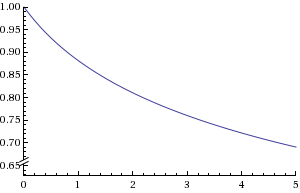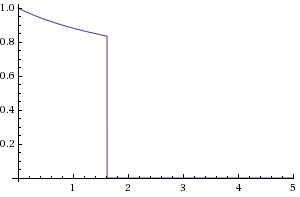In Section 3 we introduced the Klein-Gordon equation (formula (3.2)). Although it is a fundamental equation in relativistic quantum mechanics, it does not really fit the quantum world framework. The wave function
does not completely describe the state of a particle at time
. This is because the Klein-Gordon equation is a second order differential equation in time variable (unlike the Schrödinger equation). In this post we will discuss a way to take a ‘square-root’ of the Klein-Gordon equation.
-
Recent Posts
Recent Comments
Alexander Perlis on Heronian triangles conjecture Mateusz Kwaśnicki on Mathematica and hypergeometric… juanmarqz on Mathematica and hypergeometric… mateuszkwasnicki on Heronian triangles conjecture Johannes boot on Heronian triangles conjecture Archives
Categories
Meta

